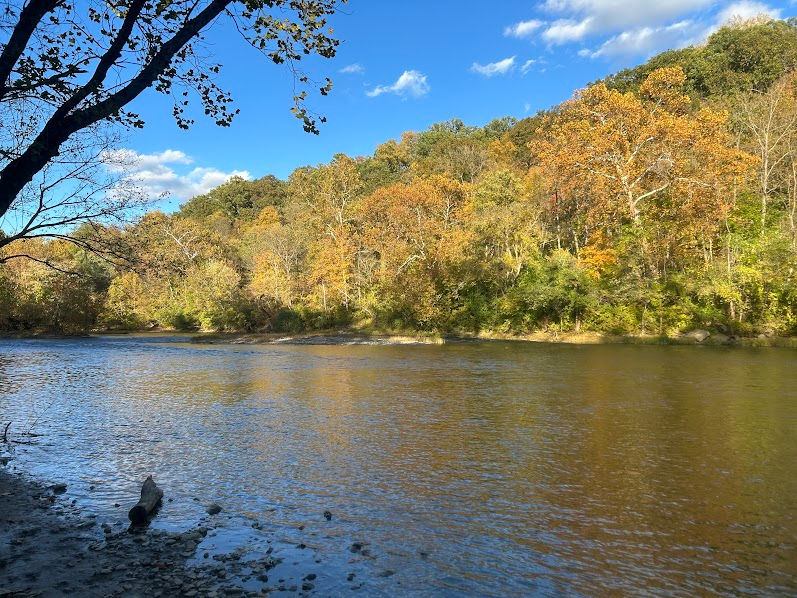Little Miami River Water Quality Field Trips
- Zane Shrewsberry
- Nov 17
- 2 min read
Stretching for over 100 miles, the Little Miami River flows from Clark County, Ohio, into the Ohio River. Over the course of this path, the Little Miami River passes through numerous towns (including Loveland), forests, and agricultural areas.

Recently, AP Environmental Science classes taught by Mrs. Aspenwall (Science) traveled to the Little Miami River to conduct a series of tests to analyze its water quality slightly upriver of Loveland, at Carl A. Rahe Access Park. These tests were conducted over two days, with the first day focusing on macroinvertebrate collection and the second day on water quality tests.
The term “macroinvertibrates” encompasses a wide variety of small, aquatic organisms, but students had a specific list of species to look for. Many macroinvertebrates are insects in early stages of life. These organisms were collected using one of two methods: either a kick net or a dip net. A kick net is set up downstream from students who act as “agitators,” kicking up mud and rocks from the bottom of the river, and allowing the disturbed small organisms to float into the net. A dip net is used to scoop around emergent vegetation, where many macroinvertebrates inhabit.
After collecting a large quantity of macroinvertebrates, students used a visual reference guide to determine what organisms had been collected. Identified organisms could then be sorted into four groups based on their tolerance of pollution. Although some species (such as left-handed snails, aquatic worms, and bloodworm midge larvae) can persist in high levels of environmental toxins, others (such as right-handed snails, water pennies, dobsonfly larvae, and mayfly nymphs) would not be present in such conditions. Given which species are present, a rough estimate of the water quality at a site can be reached. Trials found a wide range of species from every level of pollution tolerance, suggesting that the water quality was good.
Despite the second day of tests being postponed due to heavy rain, classes were eventually able to return to the site to conduct water quality tests. The first thing measured was turbidity, which is a measure of how clear water is due to suspended particles and other debris. High turbidity can prevent sunlight from reaching aquatic plants and can also warm a body of water due to the increased solar absorption of darker colors. The assessed turbidity at the site was very low, further suggesting fair water quality. Measurements of dissolved oxygen were high, exceeding 100% in some samples due to being directly downstream from water turbulence, which aids in dissolving atmospheric oxygen into water. An approximate pH of 8 (slightly basic) concluded the positive results of the day. However, tests for nitrates and phosphates yielded high results, which is generally considered bad because excess nutrients of this type in the water can lead to excessive plant growth or algal blooms. These nutrients enter the water throughout the summer as a result of agricultural runoff from fertilizers, and as such, are expected to be higher in late summer and early fall than during other parts of the year.
Overall, despite high nitrate and phosphate levels, the Little Miami River in the Loveland area was found to have good overall water quality and resulting species distribution.




Comments